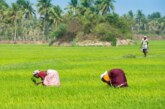Water Woes of South Africa
By Dr Arvind Kumar
According to a recent report by the news agency, IRIN, more than 40 percent of South Africa’s dams suffer eutrophication, when the water becomes nutrient-rich and algae multiply, releasing cyanobacterial toxins harmful to the liver and nervous systems of humans, domestic animals and wildlife. The increase in eutrophication is being compounded by industrial effluents, soil erosion and agriculture – which accounts for about 60 percent of South Africa’s water consumption – through the use of fertilizers.
Failing water treatment plants that allow inadequately treated sewage back into the environment are being blamed for eutrophication, which is regarded as the most serious threat to South Africa’s already stressed water resources. The 2009 Green Drop Report by South Africa’s Department of Water Affairs found that over 55 percent of South Africa’s wastewater treatment plants were in need of “drastic improvement.” Its 2010 report found that only 32 of around 850 wastewater treatment plants – about three percent – were considered completely compliant with safe discharge standards.
Many analysts agree the problem is aging water infrastructure, coupled with the rapid expansion of water services since 1994, which have been hastened by a shortage of skills and the poor management of wastewater treatment plants. The Council for Scientific and Industrial Research (CSIR), a South African scientific and technology research unit, has cautioned that the country’s freshwater resource will be depleted by 2030 if current practices towards water remained unchanged.



